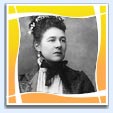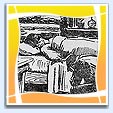 Heritage Community Foundation Presents
Heritage Community Foundation PresentsAlberta Online Encyclopedia
|
|
|
|
|||||
 |
|||||||
| Home | Info | Contact Us | Partners | Sitemap | Search | |||||||
 |
|
||||||
|
Home>>
Achievements>> Profiles>>
Henrietta Muir Edwards>>
Public Life |
|||||||
|
Public Life |
|||||||

|
—Henrietta Muir Edwards (1901) Born 19 years before any other member of the Famous 5, Henrietta Edwards was one of Canada's earliest activists for women's rights. A front-line worker for the cause of women for a period of 57 years, Edwards is perhaps the least famous of the five, but her contribution is no less valuable despite less recognized.
Edwards' public career started in 1875 at the age of 25. After finishing her education and touring Europe, Edwards returned to Montreal, where she and her sister Amélia talked their father into buying a house downtown. There they established the Working Girls' Club, which offered young women some novel services including reading rooms and study classes. Here single girls could get rooms, meals, job training, and legal advice. The Working Girls' Club filled a need for young women who came to the city in search of employment and provided services similar to those later offered by the Young Women's Christian Association (YWCA). While the first YWCA in Canada was established in 1870 in St. John, New Brunswick, the organization did not become a national association until 1895—20 years after Edwards and her sister established the Working Girl's Club.
In 1903, when the Edwards family moved west to what, in 1905, would become the province of Alberta, Henrietta's involvement in issues of social welfare did not cease. She assisted her husband with his work on the Blood Reserve, as well as writing letters and researching Canadian laws pertaining to women. In 1908, at the request of the Canadian government, Edwards compiled a summary of Canadian laws, both federal and provincial, which pertained to women and children. On the basis of this work, the Legal Status of Canadian Women was published by the National Council of Women of Canada (NCWC) in 1908. During the the course of her work, Edwards made the acquaintance of such people as Premier Haultain, Emily Murphy, Louise McKinney, Irene Parlby, and Nellie McClung.
Once again, Edwards undertook an intensive analysis of federal and provincial laws affecting women. It was a time-consuming and tedious task, but her summarization of the law pointed out the glaring inadequacies of existing laws and the need for new legislation. Emerging from her work was her second legal handbook, Legal Status of Women in Alberta, published in 1917. The second edition, published in 1921 was "issued by and under authority of the Alberta Attorney General"—which was quite an endorsement, considering it was produced by a woman who had no formal legal training. |
||||||
 |
|||||||
 |
|||||||
|
|
Copyright © 2004 Heritage Community Foundation All Rights Reserved | ||||||
 |
|||||||
For more on women and the vote in Canada, visit Peel’s Prairie Provinces.




